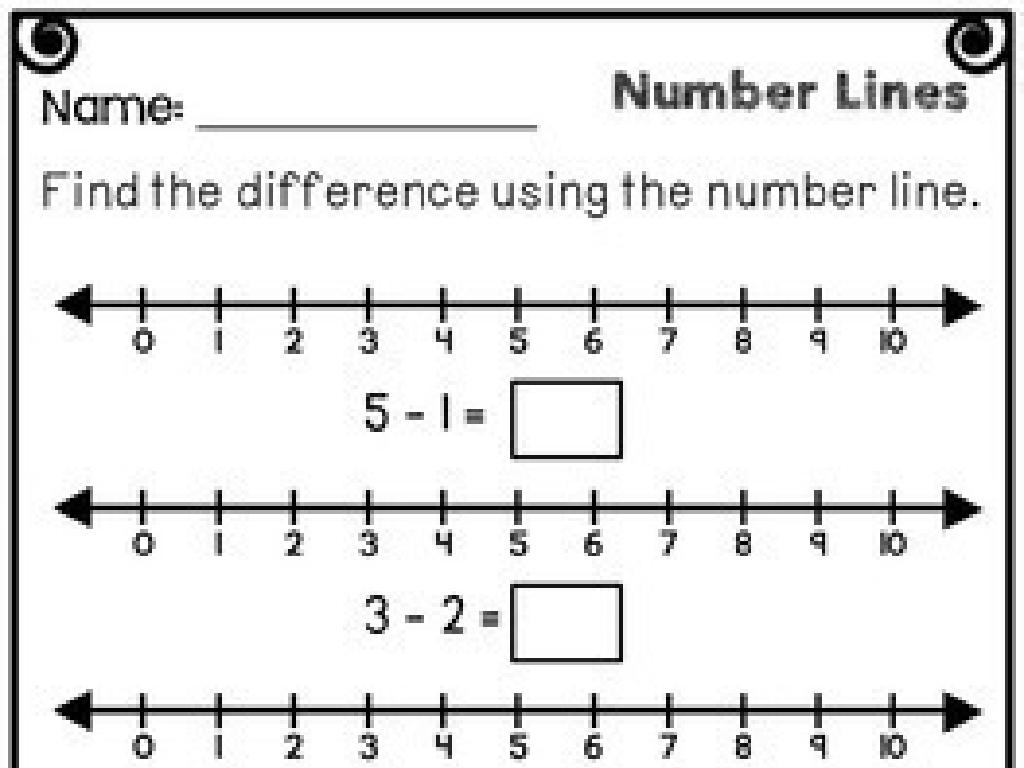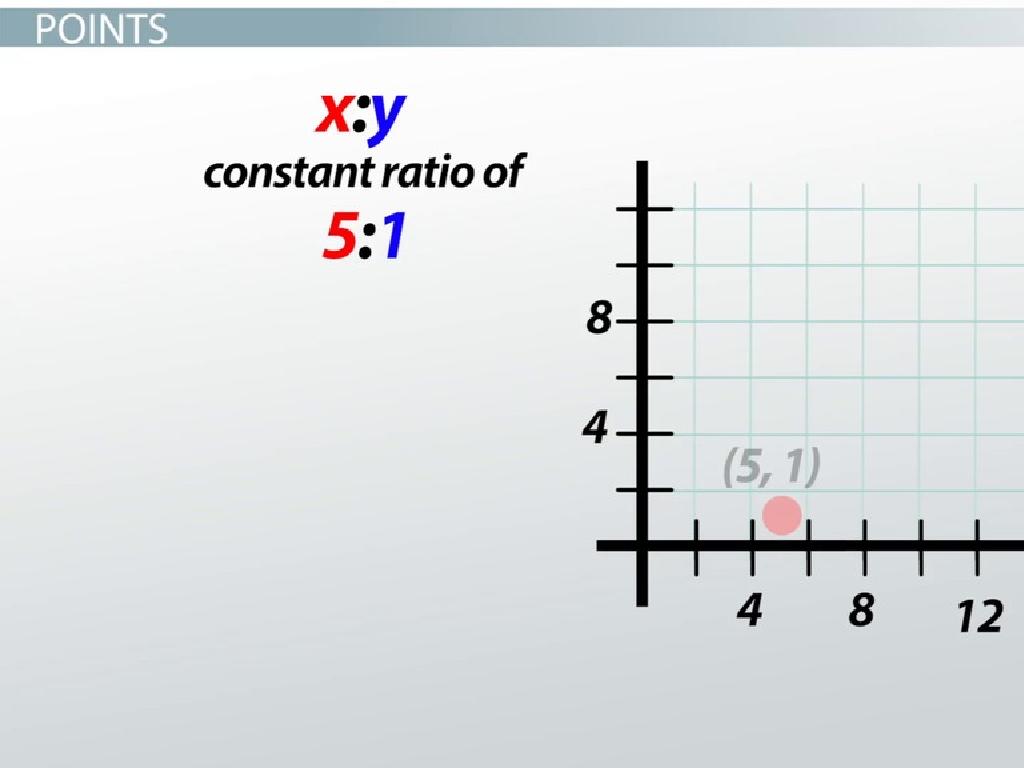States Of Matter
Subject: Science
Grade: High school
Topic: Chemistry
Please LOG IN to download the presentation. Access is available to registered users only.
View More Content
Introduction to States of Matter
– Define Matter
– Anything that has mass and takes up space.
– States: Solid, Liquid, Gas
– Solids have fixed shape; liquids take the shape of container; gases fill their container.
– Characteristics of Each State
– Solids: Ice; Liquids: Water; Gases: Steam
– Real-life Examples
|
This slide introduces the concept of matter and its different states. Matter is defined as anything that has mass and occupies space. The three primary states of matter are solid, liquid, and gas, each with distinct characteristics. Solids have a definite shape and volume, liquids have a definite volume but take the shape of their container, and gases have neither definite shape nor volume, expanding to fill their container. Use real-life examples like water in its different states to illustrate these concepts. Encourage students to think of other examples and how the states can change from one to another (e.g., freezing, melting, condensation).
The Solid State: Understanding Solids
– Solids have a fixed shape and volume
– Particles are tightly packed in a solid
– Atoms are arranged in a specific pattern, which gives solids their firm structure
– Common solids: ice, rocks, metals
– Ice: solid form of water, Rocks: various minerals, Metals: good conductors of heat and electricity
– Solids’ properties in everyday life
|
This slide introduces the solid state of matter, emphasizing its distinct characteristics such as having a definite shape and volume. Highlight the particle arrangement in solids, where atoms or molecules are closely packed together in a specific pattern, usually in a crystalline or amorphous form. Provide tangible examples like ice, rocks, and metals to help students relate the concept to real-world objects. Discuss how the properties of solids make them suitable for various applications in everyday life, such as construction materials for rocks and metals, and ice for cooling. Encourage students to think of other solids and consider their properties and uses.
The Liquid State: Understanding Liquids
– Liquids conform to container shape
– Unlike solids, liquids don t have a fixed shape but a fixed volume.
– Particle movement in liquids
– Particles in liquids are less tightly packed than in solids, allowing them to slide over one another.
– Common liquid examples
– Water, mercury, and alcohol are all liquids at room temperature.
– Exploring viscosity in liquids
– Viscosity describes a liquid’s resistance to flow. Honey is more viscous than water.
|
This slide introduces the liquid state, one of the primary states of matter. Liquids are unique as they take the shape of their container but maintain a constant volume. The particles in a liquid are in constant motion, sliding past each other, which allows the liquid to flow and take the shape of its container. Provide examples like water, mercury, and alcohol to illustrate common liquids students encounter. Discuss viscosity, a property of liquids that describes how easily they flow. Use examples like honey versus water to explain high and low viscosity. Encourage students to think of other liquids and their properties to deepen their understanding.
The Gaseous State: Understanding Gases
– Gases fill their containers
– Unlike solids or liquids, gases expand to fill the shape and volume of their container.
– Particles move freely in gases
– Gas particles are in constant, rapid motion, colliding with each other and the container walls.
– Common gases: O2, CO2, He
– Oxygen is essential for respiration, Carbon Dioxide for photosynthesis, and Helium for balloons.
|
This slide introduces the gaseous state, one of the fundamental states of matter. Highlight the unique characteristic of gases to adapt to the shape and volume of their containers due to the weak forces between particles, allowing them to move freely and spread out. Discuss the kinetic molecular theory as it explains the random and rapid movement of particles in a gas. Provide examples of gases such as Oxygen (O2), which is crucial for breathing; Carbon Dioxide (CO2), which plants use in photosynthesis; and Helium (He), known for its use in balloons due to being lighter than air. These examples will help students connect the concept of gases to everyday life. Encourage students to think of other examples and how the properties of gases make them suitable for these uses.
Changes of State: Matter Transitions
– Melting: Solid to Liquid
– When solids gain energy, they become liquids.
– Freezing: Liquid to Solid
– Liquids release energy to form solids.
– Evaporation: Liquid to Gas
– Liquids gain energy to transition into gases.
– Condensation: Gas to Liquid
– Gases lose energy and become liquids.
|
This slide covers the fundamental changes of state that matter undergoes. Melting occurs when a solid absorbs heat and becomes a liquid. Freezing is the reverse process where a liquid loses heat and solidifies. Evaporation happens when a liquid gains enough energy to become a gas, and condensation is when a gas loses energy and transitions back to a liquid. These processes are crucial for understanding the physical behavior of matter in different environments and temperatures. Use examples like ice melting to water or water vapor condensing on a cold surface to illustrate these concepts. Encourage students to think about how these changes of state play a role in everyday life, such as in weather patterns or cooking.
Plasma: The Fourth State of Matter
– Understanding plasma properties
– Plasma consists of free ions and electrons, unlike gases, solids, or liquids.
– Common occurrences of plasma
– Found in neon signs, lightning, and the sun.
– Plasma’s role in technology
– Used in TVs, fluorescent bulbs, and industrial cutting.
– Plasma in natural phenomena
– Aurora borealis and solar winds are natural plasma examples.
|
Plasma is often referred to as the fourth state of matter, distinct from the traditional solid, liquid, and gas states. It is a highly ionized gas with unique properties such as electrical conductivity, magnetism, and responsiveness to electric and magnetic fields. Students should learn about plasma’s presence in everyday life, such as in neon signs and plasma TVs, as well as its significant applications in technology like semiconductor manufacturing and metal cutting. Additionally, plasma’s natural occurrences, such as in lightning and astronomical phenomena like the aurora borealis, provide excellent examples of its role in the natural world. Encourage students to think about how plasma technology impacts their daily lives and the importance of plasma in the universe.
Bose-Einstein Condensate: The Fifth State of Matter
– Discovery by Bose and Einstein
– Predicted in 1924-25, observed in 1995
– Unique properties of BECs
– Superfluidity, zero viscosity, quantum phenomena
– BECs’ significance in physics
– Helps in understanding quantum mechanics
– Exploring BECs’ applications
– Potential use in quantum computing, sensors
|
The Bose-Einstein Condensate (BEC) is a state of matter first predicted by Satyendra Nath Bose and Albert Einstein in the mid-1920s and was not observed until 70 years later in 1995. BECs exhibit unique properties such as superfluidity, where they flow without viscosity, and allow scientists to observe quantum phenomena on a macroscopic scale. This state of matter has significant implications in the field of physics, particularly in enhancing our understanding of quantum mechanics. It also holds potential for future applications in technologies like quantum computing and precision measurement sensors. This slide aims to introduce students to the concept of BECs, their discovery, properties, and potential impact on science and technology.
Class Activity: States of Matter Exploration
– Conduct the ice melting experiment
– Observe and record temperature changes
– Use a thermometer to measure temperature at intervals
– Discuss observations with the class
– Share findings in groups and note similarities/differences
– Draw conclusions from the experiment
– What does the data tell us about states of matter?
|
This class activity is designed to provide hands-on experience with observing the states of matter through the processes of melting and evaporation. Students will work in groups to watch ice melt at room temperature and then observe the evaporation of water. They should use thermometers to record the temperature at regular intervals and note any changes. After the experiment, students will gather in a discussion to share their observations and develop conclusions about the properties of matter in different states. Teachers should facilitate the discussion to ensure that key concepts, such as the energy changes involved in state transitions, are understood. Possible variations of the activity could include using salt to accelerate ice melting or comparing the evaporation rate at different temperatures.






